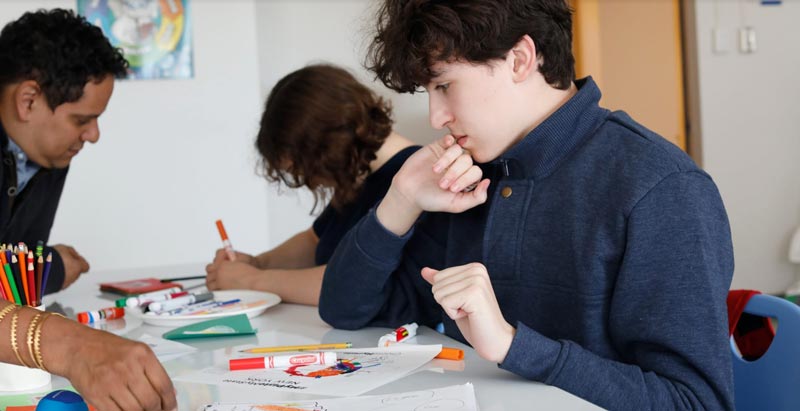Awareness and acceptance of autistic students have amplified with the recent increase in diagnostic prevalence nationwide (Autism Speaks, 2019). ASD diagnoses have steadily risen in recent years from 1 in 68 children in 2016 to 1 in 59 children in 2018 (Autism Speaks, 2019). Students with ASD require structured educational programs with clear, individualized goals and objectives to meet their diverse needs (Simpson & Zionts, 2000). A special education teacher needs to adapt lessons and objectives to meet the individualized needs of every student with autism in their classroom (Simpson & Zionts, 2000). Although students with autism may take traditional academics, they also require instruction on independent living skills, safety skills, and life skills as well (Simpson & Zionts, 2000). These skills are typically embedded in traditional academics or function as separate classes in a students’ schedule.
Strategies for working with autistic students include reducing visual and auditory stimuli, learning in small groups, avoiding teaching compliance and teaching through preferred interests (Notbohm & Zysk, 2010). These strategies highlight the importance of intensive special education training when working with students on the autism spectrum. These strategies are also general strategies and do not take individual differences or gender into consideration. Every student with ASD is different and requires unique supports to meet their diverse needs. It is imperative that special education teachers implement these individualized supports.
Relationships matter when working with students with ASD (Greenspan & Wieder, 2007). Students on the spectrum, much like all students, work better in environments where they feel trusted and valued, especially when differences are considered. Being that autism spectrum disorder is a developmental disability, it is imperative that practitioners work with students at their current developmental level. When students learn through teachers that they trust and value, these relationships help development grow. As a student begins at Shrub Oak, educators begin by learning student’s strengths and passions, forming relationships and tailoring the curriculum to meet each student’s diverse needs.
Instructional methods for students with autism spectrum disorder are controversial among professionals who work with this population. Depending on the school students attend, the approach or methodology might be different in educating that student. Some methods take drastic measures to restore an “individual with an autism-related disability to normalcy” (Simpson, 2005, p. 141), where others focus on the individual developmentally and honor those differences (Greenspan & Wieder, 2007). At Shrub Oak International School, we honor those differences by providing an individualized and respectful curriculum.
With the many unique gifts and abilities, an autistic student possesses, in addition to their need for a curriculum that nurtures and empowers them, a special education path becomes not only ideal but necessary for the success of a student. As a world-class, private special education boarding and day school and a new benchmark in autism education, Shrub Oak International School offers a program custom-designed to meet each student’s individual goals. Our goal is to assist students in developing the skills necessary to reach their highest potential and celebrate their individual strengths. We serve the sophisticated needs of an international co-ed population of children, adolescents and young adults on the autism spectrum.
Our special education program includes instruction in core academics, life skills, project-based learning, social interaction, health/safety, and career/vocational preparation to enable and empower students to be self-determined and as independent as possible. Within these areas, students and their families, together with a transdisciplinary team of educators, clinicians, and campus life staff, working in concert, determine appropriate goals for each student while giving support in a 2:1 student, staff ratio. At Shrub Oak International School, we provide the groundwork for success, our students do the rest.
References
Autism Speaks (2019). Autism facts and figures. Retrieved from https://www.autismspeaks.org/autism-facts-and-figures
Greenspan, S. I., & Wieder, S. (2007). The developmental individual-difference, relationship-based (DIR/floortime) model approach to autism spectrum disorders.
Notbohm, E., & Zysk, V. (2010a). 1001 great ideas for teaching and raising children with autism or Asperger’s. Arlington, TX: Future Horizons.
Simpson, R. L. (2005). Evidence-based practices and students with autism spectrum disorders. Focus on Autism and Other Developmental Disabilities, 20(3), 140-149.
Simpson R.L., & Zionts, P. (2000). Autism second edition information and resources for professionals and parents. Austin, TX. Pro-Ed.








